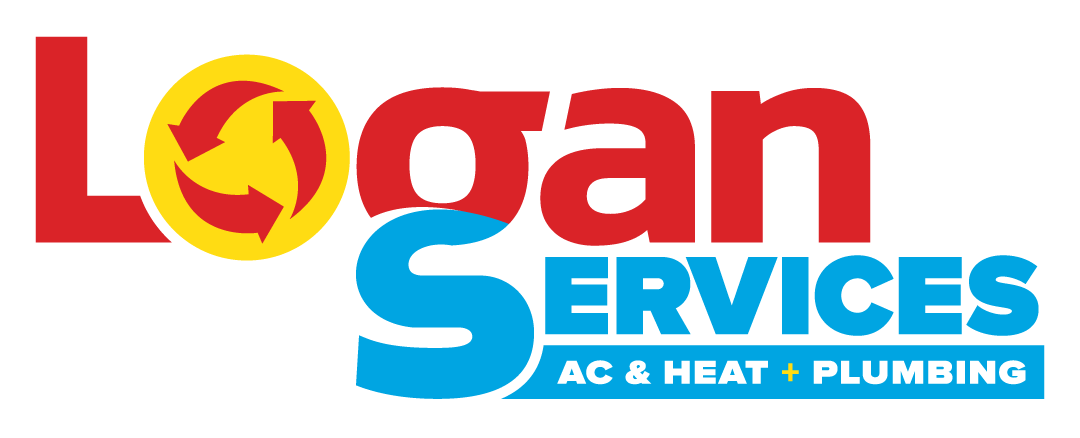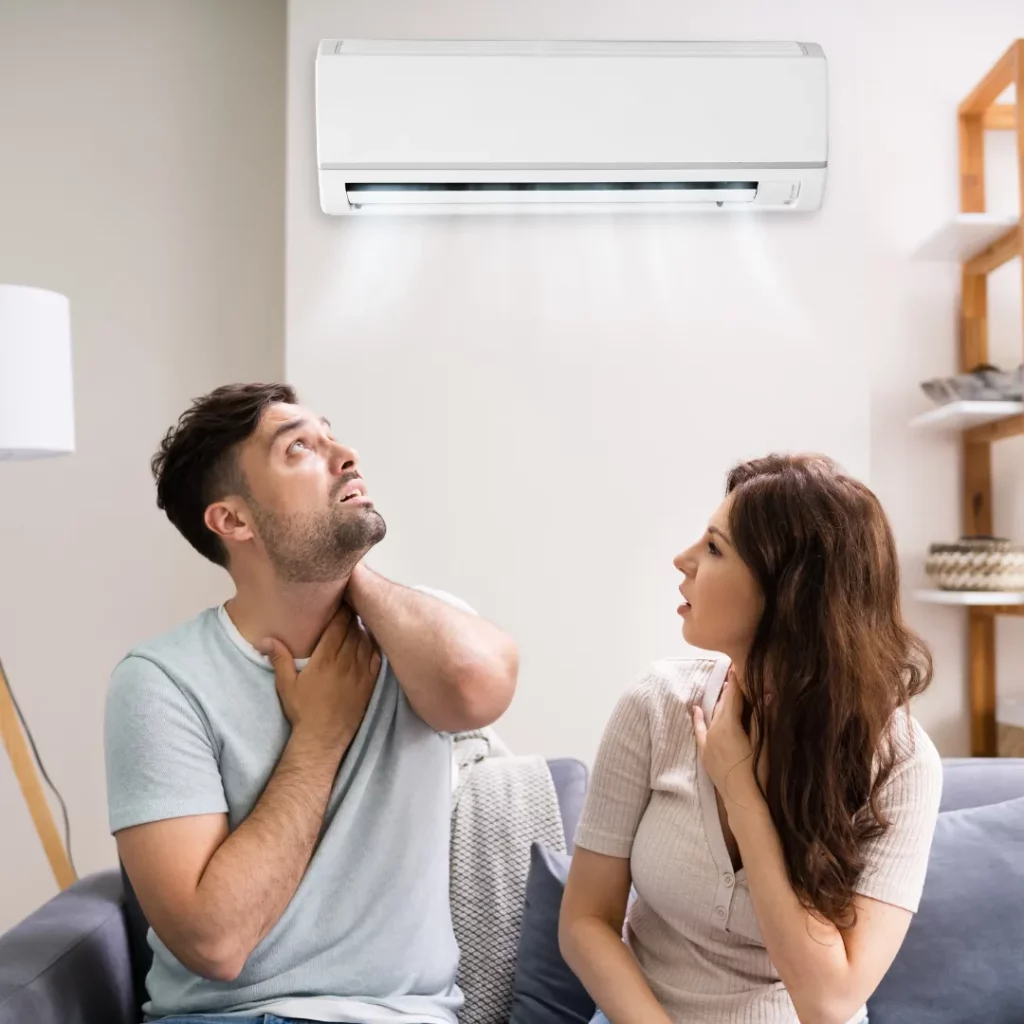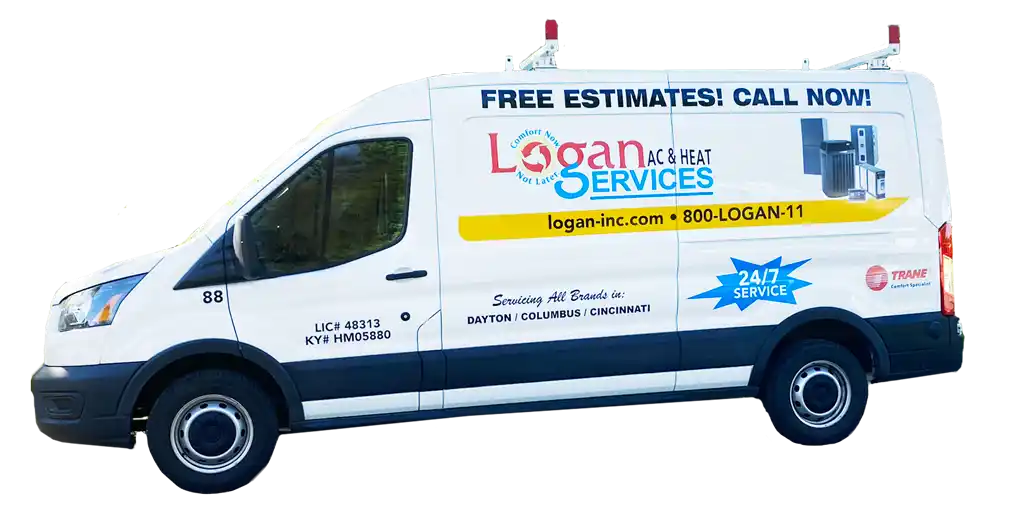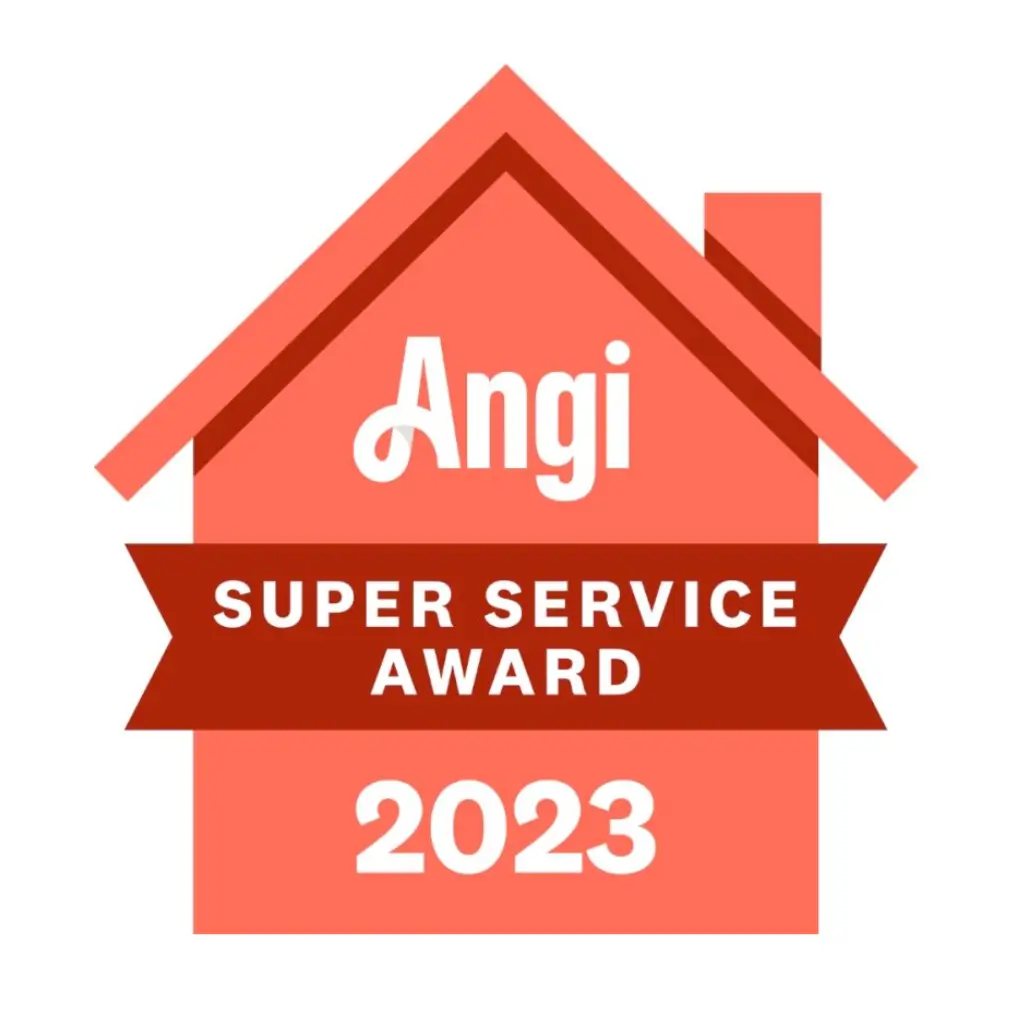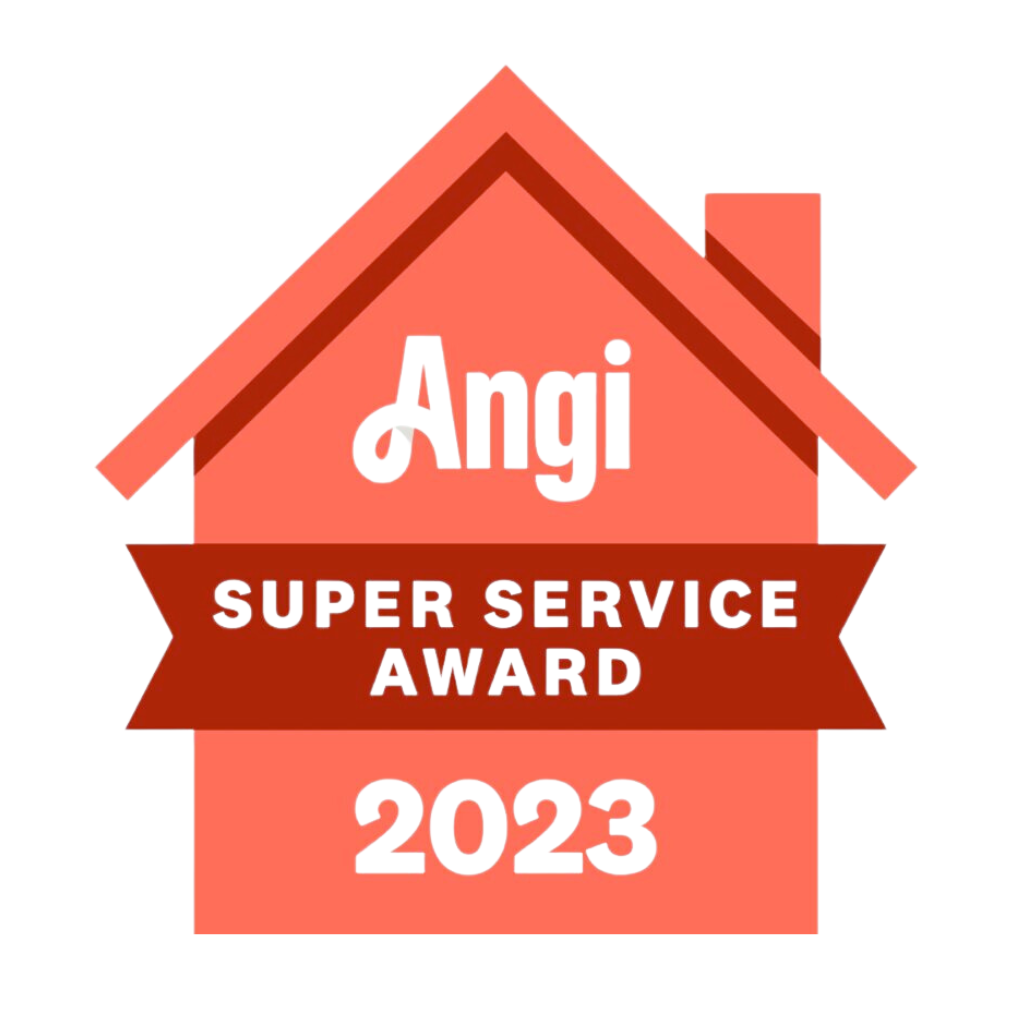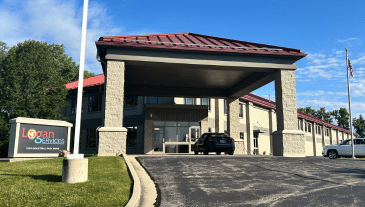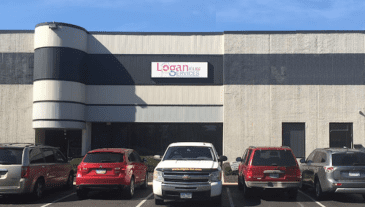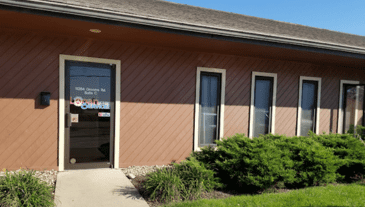When summer rolls around, and temperatures start to soar, there’s nothing quite like the relief of stepping into a cool, air-conditioned home. However, when your AC system isn’t working properly, it can quickly turn your home into an uncomfortable and stuffy place to be.
One of the most common problems homeowners face with their AC system is when it’s not blowing cold air. Let’s explore what to do when you’re faced with this problem and when it’s time to call in the professionals at Logan Services A/C, Heat & Plumbing.
Possible Causes of AC Not Blowing Cold Air
Having an air conditioning system is a great way to keep our homes cool and comfortable during hot weather. However, an AC that fails to blow cold air can be a real problem, especially during summer months. When this happens, there could be various reasons why it is not cooling effectively.

Low Refrigerant Level
The refrigerant is the substance that absorbs heat from the indoor unit and releases it outside. A low refrigerant level signifies that there is a leak in the system. If this occurs, the AC will not cool the air effectively. Some signs of low refrigerant levels are hissing noises from the AC, ice buildup on the coils, and little to no cool air.
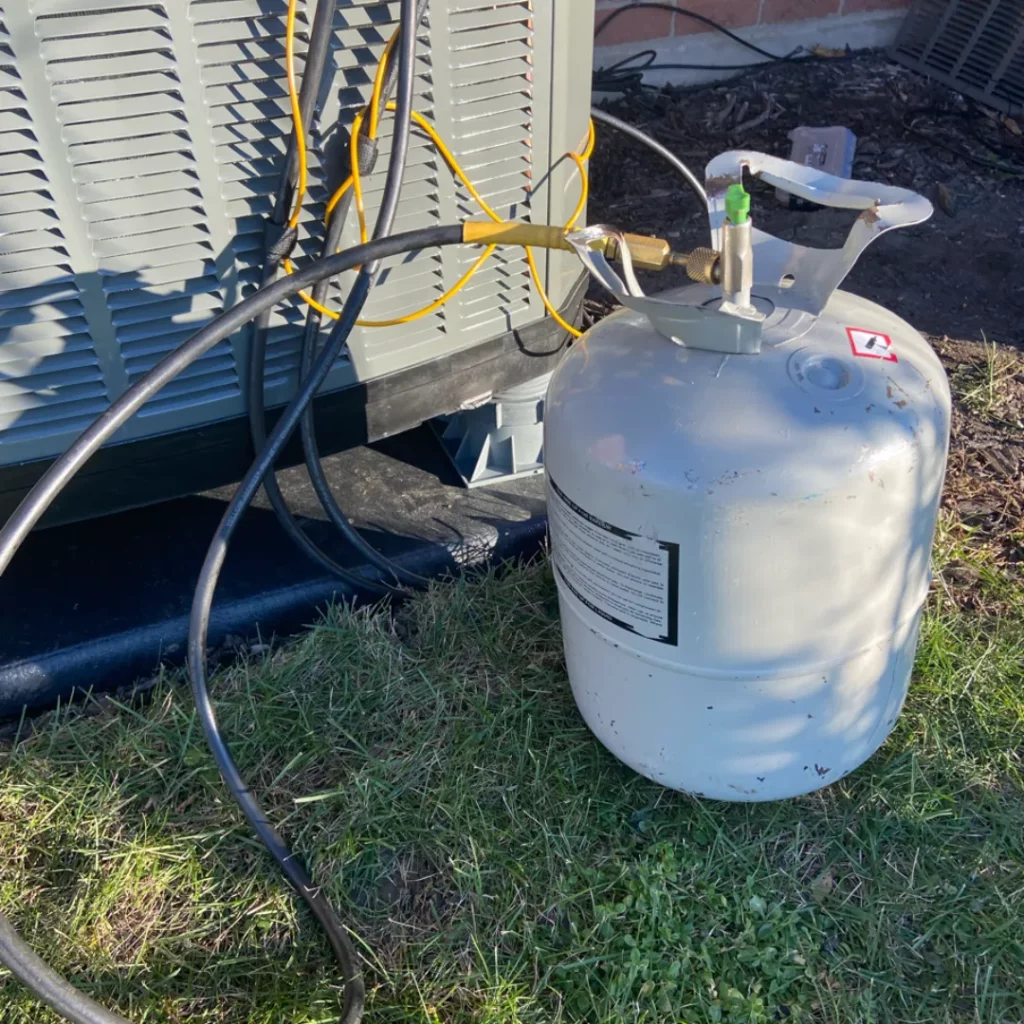
Identifying Refrigerant Leaks
Identifying a refrigerant leak can be quite tricky. However, some things to look out for include puddles or leaks around the AC unit, ice formation on the coils, and hissing sounds. Refrigerant smells like a sweet/chemical fragrance, so if you can detect this smell, it could indicate a leak within the system. In such cases, it would be necessary to contact a professional to find and fix the leak, then refill the system to the appropriate level.
How to Recharge Your AC
Recharging an AC system requires technical expertise; under EPA regulations, only certified professionals are licensed to recharge an air conditioner. Contact a professional heating and cooling company like Logan Services A/C, Heat & Plumbing to do this for you. Recharging an AC can be an important maintenance step that keeps the system working efficiently for a longer time.
Dirty or Clogged Filters
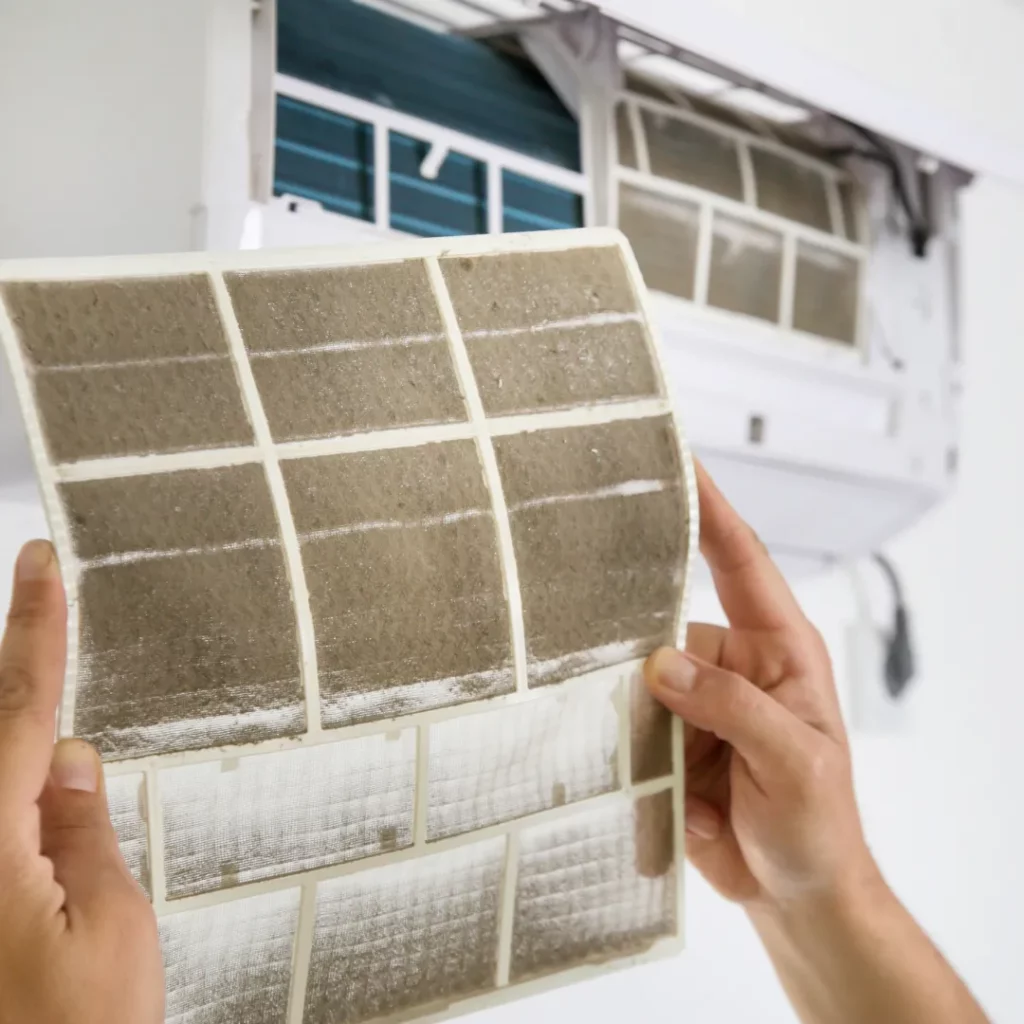
Dirty or clogged filters can cause an AC to produce warm air instead of cold air. This is because the filters trap debris, dust, and other particles, making the AC unit unable to cool the air effectively and provide the necessary airflow to meet the temperature needs of the central AC unit. This is one of the easiest causes of no cool air. However, it is also one of the most overlooked.
How to Clean or Replace Air Filters
Cleaning or replacing air filters is a preventive maintenance step worth undertaking. To clean a dirty air filter, remove them from the unit, wash them thoroughly with water, and allow them to dry before putting them back in. Replacing them, on the other hand, requires purchasing new filters and inserting them into the unit. It is important to ensure that you use the right filter for your AC unit. Check the user manual to confirm this and find professionals in your area that can provide you with more advanced air filtration methods if desired.

Preventive Maintenance for Filters
To prevent dirty or clogged filters, it is important to clean them regularly. Depending on the usage and conditions, filters require cleaning or replacement every two to three months. Beyond that, it can result in airflow issues and overheating of the system leading to breakdowns. Regular maintenance of filters will also keep the AC unit running efficiently and save on power bills in the process.
Frozen Evaporator Coil
A frozen evaporator coil is a common issue that causes an air conditioning unit to blow warm air instead of cold air. This happens for various reasons, including low refrigerant levels, dirty filters, airflow obstruction, or malfunctioning components. When this occurs, it is important not to try to fix it yourself as it could cause further damage. Seek help from an HVAC professional to fix your central air and get back to enjoying your home comfort.
Thawing a Frozen Evaporator Coil
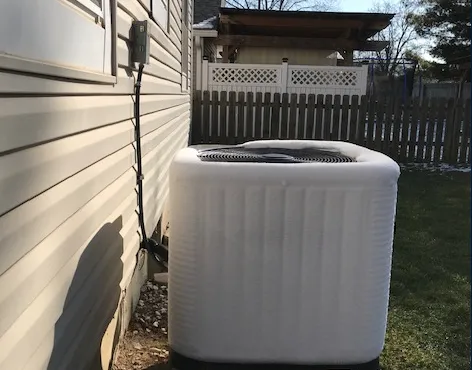
When the evaporator coil freezes, turn off the AC and leave it to thaw for 24-48 hours. This will allow the ice to melt away, and the unit will return to normal operation. After the thawing process, turn on the unit and adjust the thermostat to the required temperature. In case of further issues, seek professional help.
Preventing Coil Freezing Issues
One way to prevent coil freezing is by ensuring that the filters are clean and regularly serviced. Dirty filters can cause reduced airflow over the coil, leading to low coil temperatures. Another way to prevent coil freezing is by maintaining proper refrigerant levels. Low refrigerant levels can cause the coils to freeze. By keeping these preventive measures in mind, your AC will continue pushing cold air during hot weather.
Troubleshooting Tips for Common AC Problems
Sometimes, there are steps you can take to troubleshoot your AC issues. Let’s take a look at what you can do to potentially fix the problem.
Thermostat Issues

One of the most common cooling unit problems are issues related to the thermostat. If your thermostat is not working properly, it can cause your AC to malfunction or fail to turn on altogether. Here are some common thermostat issues:
Troubleshooting Thermostat Problems
First, make sure that your thermostat is set to the correct temperature and that it is in the appropriate mode (cooling or heating). You should also check the batteries in your thermostat to make sure they are not dead or low.
If these steps do not resolve the issue, you may need to replace your thermostat altogether. Upgrading to a programmable or smart thermostat can help improve energy efficiency and make it easier to control your home’s temperature.
Damaged Ductwork or Vents
If your AC is not providing enough cool air or if the air is not distributed evenly throughout your home, damaged ductwork or vents could be the culprit. Here are some things to check for:
Inspecting and Repairing Ductwork
To check for damaged ductwork, you should visually inspect the ducts for signs of wear and tear, such as cracks or holes. You should also check for any loose connections or joints. If you find any issues, you can use duct tape or an HVAC-approved adhesive to seal the leaks.

If the damage is significant, you may need to replace the ducts altogether. This can be a complex process, so you need to hire a professional HVAC technician to do the job for you.
Checking for Blocked Vents
If your AC is not providing enough cool air, you should also check for any blocked vents or registers. Ensure that furniture, curtains, or other objects are not blocking the airflow. You can also use a vacuum to clean out any dirt or debris that may be clogging the vents.
Electrical Problems
If your AC is not turning on at all, it could be due to electrical problems. Here are some common issues to look out for:
AC Circuit Breaker Issues
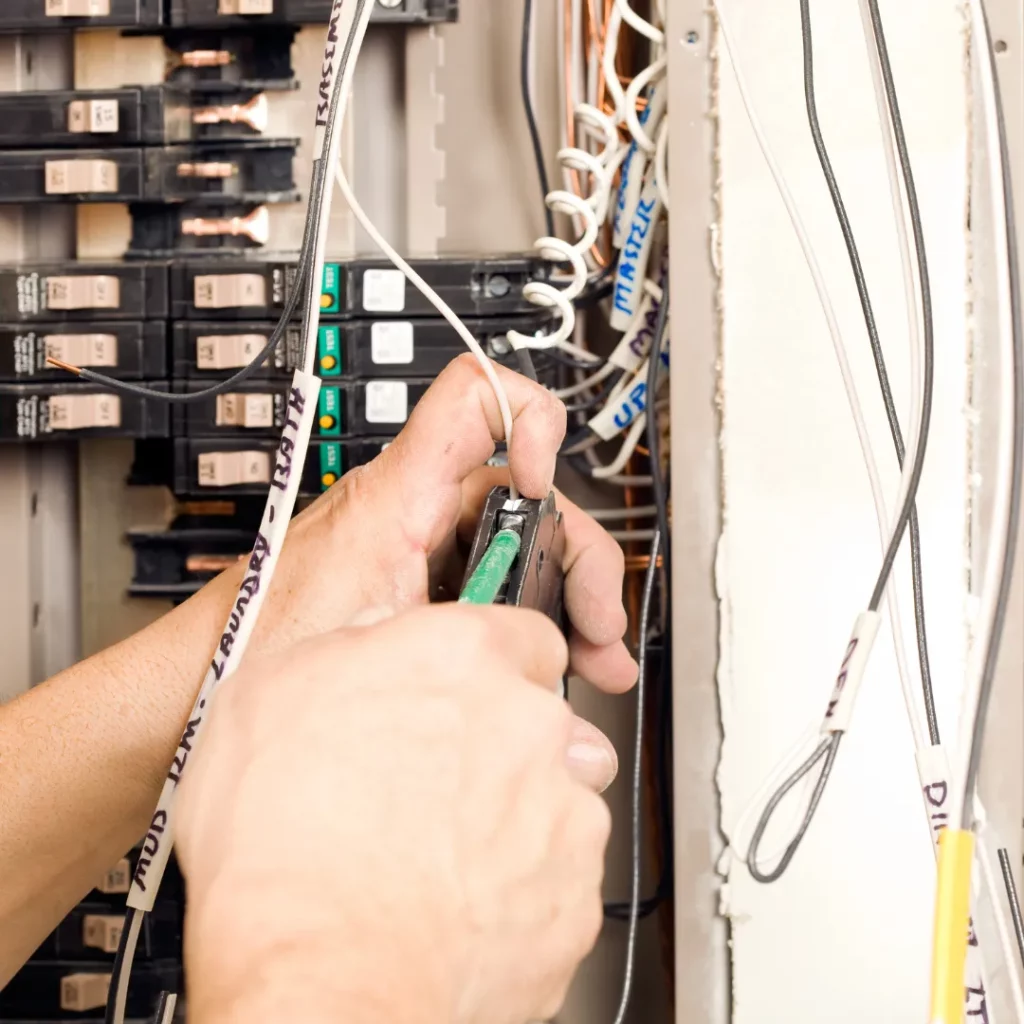
The circuit breaker that controls your AC unit may have tripped or blown, which can cause the unit to stop working. To fix this issue, you can try resetting the circuit breaker. If the circuit breaker continues to trip or blow, you should call a professional technician to inspect your AC unit and electrical system.
Capacitor or Contactor Replacement
The capacitor and contactor are essential components in your AC system, and they may sometimes need to be replaced due to wear and tear. Signs of a failing capacitor or contactor include the AC unit not turning on or making strange noises. If you notice any of these issues, you should call an HVAC technician to replace the faulty part.
When to Call Logan Services A/C, Heat & Plumbing
Are you experiencing problems with your air conditioner? Do you find that your unit isn’t producing cool air or that it’s making strange noises? If so, it may be time to call Logan Services A/C, Heat & Plumbing. We are your local experts in AC repair, replacement, and maintenance. Not sure when to give us a call? Here are a few key indicators that it may be time to contact us:
- Your AC unit isn’t producing cool air
- Your AC unit is making strange noises
- Your AC unit is leaking water
- Your energy bills are higher than usual
Logan Services A/C, Heat & Plumbing not only performs AC repair, but we can provide routine maintenance and inspections to ensure your system is efficient all summer long. We are backed by over 50 years of experience serving Ohio residents with quality HVAC services. Contact us today to schedule an appointment. Before you know it, you’ll be enjoying an efficient system that keeps your space cool and comfortable all summer long.
FAQs: AC Not Blowing Cold Air
Why is my AC not blowing cold air?
There are several reasons why your AC is not blowing cold air. A few of them are:
- Refrigerant Leak: The refrigerant is responsible for cooling the warm air. If there is a leak, there won’t be enough refrigerant to cool the air.
- Dirty Condenser Coils: The condenser coils are vital in removing heat from the air conditioner. When they are dirty, dust and debris will insulate the coils, preventing proper heat transfer.
- Faulty Compressor: The compressor compresses the refrigerant, allowing for heat exchange. When the compressor is faulty, it cannot compress the refrigerant effectively.
How can I tell if my refrigerant level is low?
If your refrigerant level is low, there are signs you can look out for, including:
- The air conditioner blows warm or hot air instead of cool air.
- The AC unit has ice or frost on it.
- An AC unit is making a hissing or bubbling sound.
- The unit consumes more energy than usual to function.
Can I recharge my AC refrigerant myself?
Recharging the refrigerant yourself is not advisable and can even be dangerous. It is recommended to hire a professional to handle the refrigerant since it is poisonous and can cause serious environmental pollution if not handled properly.
